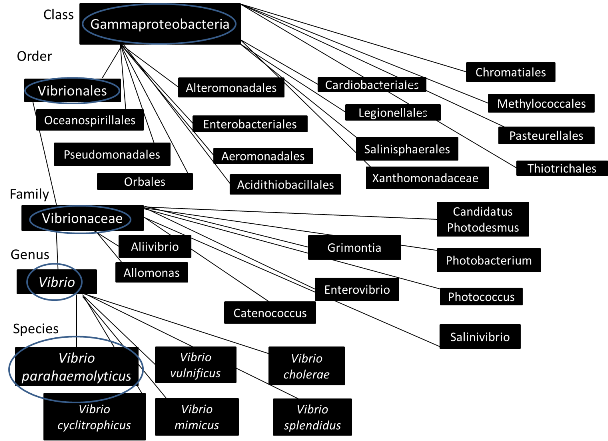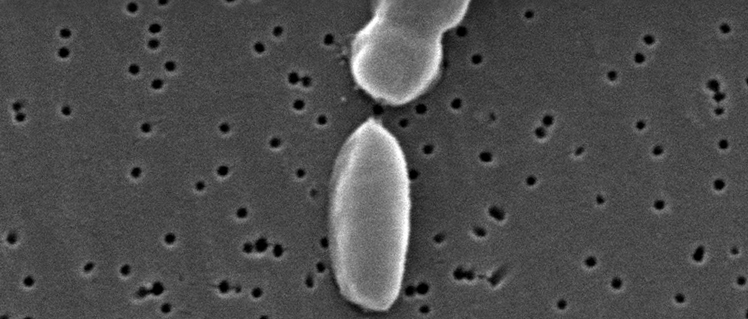Classification
The following shows the classification of the bacterium Vibrio parahaemolyticus:

Vibro parahaemolyticus is in the Domain Bacteria. An example of another organism in this domain is Nostoc. Similarly to V. parahaemolyticus, Helicobacter pylori is in the Phylum Proteobacteria. The class that V. parahaemolyticus, like Salmonella, is gammaproteobacteria.
Bacteria: Vibrio parahaemolyticus is in the bacteria domain and kingdom due to its lack of both a nucleus and membrane bound organelles.
Proteobacteria: This bacterium is in the proteobacteria phylum due to it being gram-negative. Gram-negative is the absence of peptidoglycan in the cell wall.
Gammaproteobacteria: This class has a very wide range of characteristics. This bacterium is considered in this class due to its motility via polar or peritrichous flagella. It is also unicellular and gram-negative.
Vibrionales: Vibrio parahaemolyticus is considered to be in this order due to its ability to respire anaerobically. Vibrionales also have two circular chromosomes, unlike most of the gammaproteobacteria species.
Vibrionaceae: The organism is associated with this family due to its ability to ferment. These bacteria are also oxidase positive and primarily live in aquatic environments.
Vibrio: This genus is used in classifying V. parahaemolyticus due to its pathogenic life style. Vibrio cholerae is another pathogenic species in this genus.

Classification is just the start of this organism! To learn more about where it lives, check out the Habitat page.

